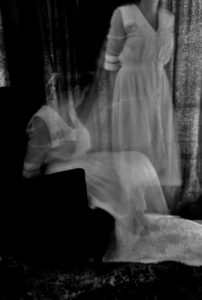
To say that Hollins University is haunted would be a bit of an understatement. Records of the various spirits and supernatural occurrences popcorn throughout the school’s almost 200-year history: correspondence from the mid-19th century debates the level of concern that should be assigned to the strange occurrences in a student’s dorm room; the student newspaper documented firsthand experiences that range from strange to terrifying during the 1970s and 80s, and even today students cohabitate and share camaraderie with some of the more well-known ghosts that make Hollins University their home.
Let’s just say that it is no surprise that Hollins is considered one of the most haunted colleges in America. Yet, it is surprising that there is so little known about these ghostly tales and the history behind them.
The land that Hollins now sits on has worn many faces. Indigenous Cherokee, Sioux, and Iroquois people used the area as a hunting ground before King George “granted” 150 acres of property to an early settler, where it changed hands multiple times before becoming a hot springs resort, a seminary, a finishing school, a college, and, finally, a university.
Presser Hall, built in 1926, is a music building with a relatively well-known reputation for the supernatural among students, faculty, and staff. Not one, not two, but three versions of the building’s ghostly origins have endured. All of them involve an unnamed piano student and sometimes feature her older male professor, and each iteration is more dramatic than the last.
The first version of Presser Hall’s ghost is perhaps the most believable out of the three. Supposedly, a piano student was practicing in one of the private rooms in the building. Each floor has a series of (somewhat) soundproof, private practice rooms, with at least one window and an upright piano. The third floor held a baby grand. The student was leaning out the window of her room, calling to someone. Some say she was talking to a professor, others say a friend and fellow student. Suddenly, the old, heavy wood slammed shut on her neck, decapitating her.
Are the windows strong enough to decapitate someone? Probably . . . hopefully . . . not. They are certainly heavy but most are painted shut and all but immovable. A crushed windpipe could be a more probable worst-case scenario. They are windows, after all, not guillotines.
The second story describes a professor who fell in love with his piano student. According to the legend, she was unaware of his affections or intentionally avoided the subject with him. One night, the professor cornered her in one of the practice rooms and confessed his love to her. She rejected his advances. But when she did, he became angry and strangled the student with a piano wire.
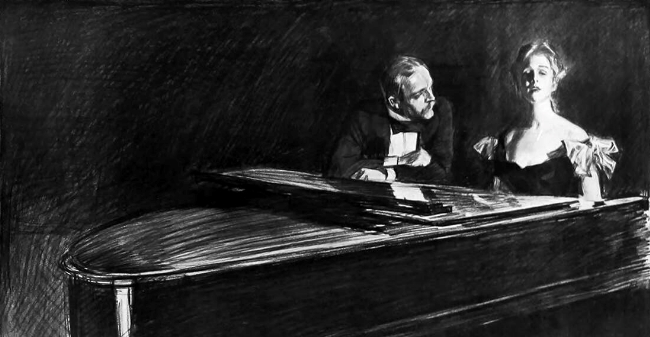
Many women are aware that an infuriating number of romantic rejections end with the spurned party, very often a man, retaliating with violence. Perhaps this story best resonated with students fifty years ago in the same way that “true crime” stories resonate with people today: stories that are sensational yet believable enough and also carry a warning for young women to be cautious when dealing with older, potentially dangerous, men who hold positions of power.
The last story is the most dramatic. The piano student was having an affair with her professor, but this time, she was the one who pursued his affections. The student kept asking the professor to leave his wife for her. Finally, he refused and abruptly ended their relationship. Grief-stricken, she locked herself in one of the practice rooms, cut her wrists deep enough to mortally wound her, and played the piano until her blood stained the keys and her life drained out of her.
Variations of these stories have been documented and retold since the 1970s, but stranger still is that many Hollins students have experienced something unexplainable in the building. Sometimes they hear piano music echoing through the halls or from outside. They might insist that no one else occupied the building at the time or that all the windows were dark and empty. Music students who practice late into the night in one of the small, not-quite-soundproof practice rooms recall shadows moving, being suddenly taken by ominous feelings, cold spots, even on warm nights, or sudden temperature changes, chairs sliding across the room, and doors opening and closing on their own. Some have even been chased or pushed out past the building’s doors. A number of former students have been locked in practice rooms for several minutes before being suddenly unlocked or have paused in their daily practice only to hear the song pick up from an unoccupied room.
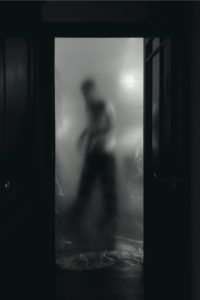
On occasion, the figure of a man, silent and spectral, has been seen hovering in the doorway of the practice rooms on the second floor.
Even faculty and staff are familiar with the strange presences once the sun goes down. Supposedly, the campus security guards refuse to enter Presser alone at night when making their nighttime rounds across the campus.
Much of the activity is centered on Presser’s second and third floors, where the practice rooms are located. One former Hollins student recalled playing the piano late at night in one of these rooms when she heard a distinct knocking from the wall next door, as if someone were nonverbally asking her to quiet down. When the student looked into the adjoining room to see who had made the noise, not only was the practice room empty, but a wall-to-wall bookcase covered the area where the sound originated.
Another student was practicing her sheet music one evening when she felt a swift, cool breeze come through the small studio, like an icy burst of winter cold, and then she watched as her pages of sheet music began to turn on their own. The student frantically grabbed the pages, opened the door, and sprinted from the room. She swore that both the window and door had been shut. After that instance, she never practiced after dark.
Both the gruesome tales and the host of in-person accounts start to make a little bit more sense, given that there are three spirits who reside in Presser Hall.
Like a trio of musical, ghostly neighbors, each of these spirits resides in one of the three floors as their respective domain.
Annabelle Daniel resides on the first floor. She is especially fond of the music library and sharing the piano bench with practicing students. On the second floor, you are likely to hear Theodore Presser (yes, the building’s namesake) in one of the small practice rooms playing the piano. He is not amused with how the Hollins Choir members decorate his bust with t-shirts and other accessories and would enjoy it if the school would perform his most famous work, Eutid, more frequently. Lastly, a spirit on the third floor who goes by Bryan likes the largest practice room with the grand piano, and hounds students who use the building late at night. Most of the accounts that describe a physical altercation in some way—things being knocked over or moved, doors being locked, and so on—can be attributed to him.
It is difficult to find personal or genealogical records to corroborate the spelling of Annabelle’s name or her correct dates, given the fact that she was enslaved all of her life, and record-keeping of black enslaved individuals is slim. Annabelle lived from the 1770s until the 1840s, only a few decades before the Civil War. She saw Hollins transform from the Botetourt Springs Resort, its two seminaries, and the early days of the Hollins Institute. Some of her descendants worked at Hollins and lived in the surrounding community. Annabelle could not read or write, but she was taught to play the piano.
Now, she will sometimes appear to students or sit next to them on the piano bench in the first-floor music library, surrounding herself with the sound of music.
The spirit who identified themself as Theodore Presser claims the building’s second floor, with its mixture of offices, small practice rooms, and a pair of larger classrooms where students practice and take classes. On a tall pedestal sits a bronze bust of Mr. Presser that is often decorated with a t-shirt from the Hollins Choir and more than a few snazzy accessories, including a hat, sunglasses, and a feather boa. If you are at all familiar with Hollins’ many sparkly and glittery traditions, you can imagine that such decorations are not out of character. Actually, the bust sometimes appears more than a little bit looming at night—paranormal occurrences notwithstanding—so these decorations help lighten things up.
Theodore Presser was born on July 3, 1848 in Pittsburgh, Pennsylvania, and eventually became the Director of Music at Hollins College in the fall of 1880, where he also taught piano and music theory classes until he moved back to Pittsburgh in 1884 and ultimately passed on October 28, 1925. He is noted for his original compositions, the Presser Publishing Company, which is one of the country’s oldest classical music publishers, and his philanthropic efforts towards collegiate music education.
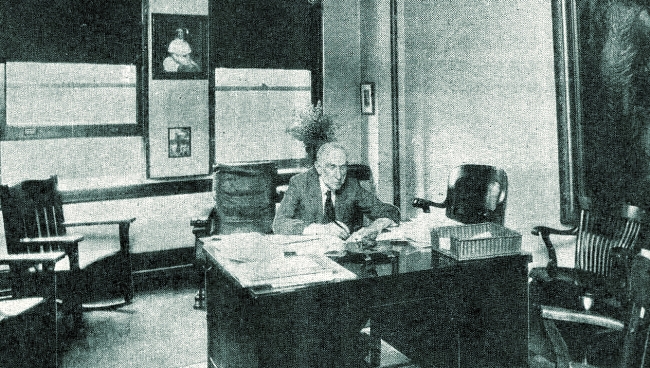
Hollins remains a special place for Mr. Presser, and he still cares about the school and its students very much. He is most active at night, so any students or passers-by are likely to hear him or Bryan practicing the piano. He also enjoys listening to the piano students practice, but is not keen on these sessions taking place after sundown. Mr. Presser also prefers that his bust remain shirtless, but that’s a conversation that he must take up with current students and faculty. Truthfully, he is also kind and a little quirky. It is also safe to say that he is pleased that so many students make use of the building, and that those students in turn appreciate the mark that his legacy has left on the institution.
Calling the third spirit, Bryan, an asshole is not altogether unwarranted, since he is the culprit who has been a bit . . . territorial . . . when it comes to “his space” and the building itself.
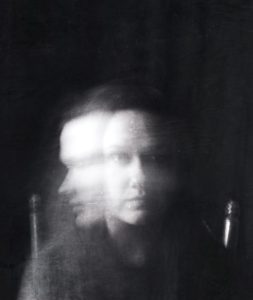
Bryan identifies as a transgender male, but presented as female for the majority of his lifetime. He was born in the early 1940s and attended Hollins in the 1960s as a music student. His favorite practice instrument was the grand piano on the third floor, which is unfortunately where he had an accident that led to his death. Ironically, the version of the Presser Hall ghost story where the piano student meets her untimely demise by being decapitated is not all that far removed from the truth. In fact, Bryan was leaning out of the window to wave to a friend who was passing by the building and fell out of the window.
Now, he enjoys playing the grand piano at night when alone in the building. Bryan also likes to be around others and listen to students practice, especially classical music, but he is very adamant that he does not approve when students are in Presser Hall at night, for practice purposes or otherwise. It doesn’t justify why he has given so many students a fright over the years, but this does explain his mannerisms to some degree.
It’s almost sad to unravel the mysteries behind Presser Hall’s extensive paranormal history. For fifty years, Hollins students have swapped spooky experiences and late-night adventures involving the music building. Most of Hollins’ haunted legacy is attributed to Presser Hall. To discover that the fanciful legends are more branched off from the imagination than the events that possibly inspired them is not exactly disappointing, but it is wonderful that the spirits now attached to the building all have different backgrounds, histories, and stories of their own.
Kat was grafted to Virginia almost a decade ago from a small town called New York, and has since made the mountains her home. She is a graduate of Hollins University and Washington & Lee University School of Law, renaissance woman, and folk magic practitioner. This article is a snapshot of her larger work-in-progress, an anthology of Hollins’ ghosts, ghost stories, and the history behind them both.
**Featured Image: Jay Canty, Unsplash – altered, cropped
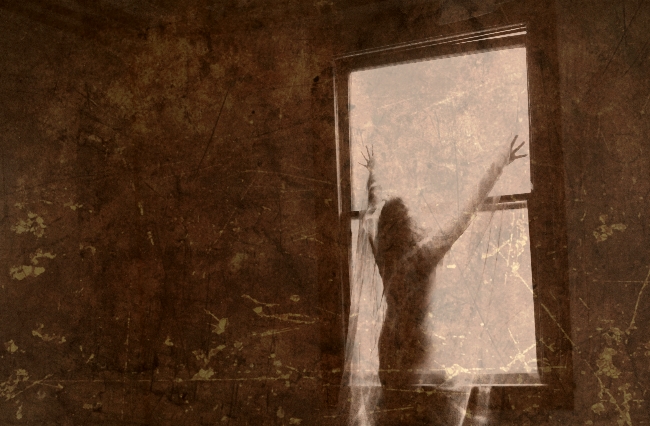
1 Comment